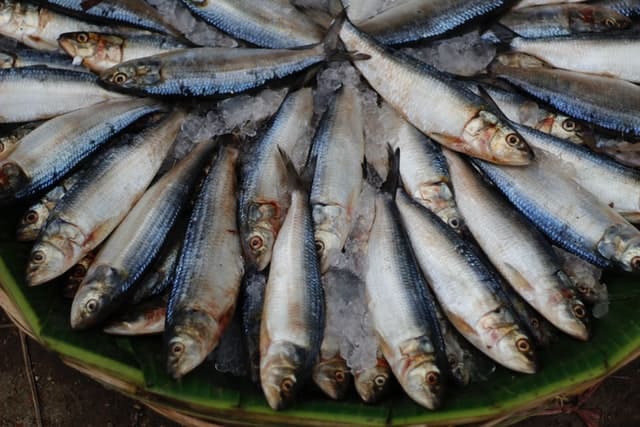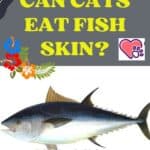
Although dogs do not need a varied diet, the body must receive all the necessary nutrients, vitamins, and amino acids from food. Animal proteins are the basis of the diet of a four-legged pet, and their source is not only meat, but also fish. Is it any, and is it possible to give a dog herring? What will the experts answer?
Benefits to including fish in a Dog’s diet
Fish is a rich source of proteins, essential amino acids and omega-3s for the body, as well as minerals and vitamins. It contains:
- vitamins A, which are rich in fish oil, groups B, D (cholecalciferol), E;
- trace elements – calcium, phosphorus, magnesium, iodine, zinc and others;
- amino acids – taurine, methionine, lysine, tryptophan.
All these and other substances contained in fish are necessary for both the human body and domestic animals. They promote the growth and repair of tissues, increase immunity, regulate blood cholesterol levels, promote the absorption of starch and fats, and their processing into energy. Fish is a rich source of vitamin D, a deficiency of which increases the risk of developing cardiovascular pathologies, cancer, and other diseases.
Amino acids are essential for the body to maintain the health of the heart and vascular system, cerebral circulation, nervous system, vision and other bodily functions. The body does not synthesize many amino acids on its own, so they must be supplied to it with food.
Fish is rich in omega-3 fatty acids. It is a vital substance for the body because they:
- support the health of the cardiovascular system;
- participate in the regulation of blood clotting;
- restore heart rate;
- positively affect the nervous system, increase the body’s resistance to stress;
- remove inflammatory processes in tissues;
- participate in the formation and development of the nervous system;
- prevent aging of the body, etc.
Scientists have found some harmful substances such as mercury in some types of fish, but most marine fish species are considered to be as safe as possible. These include:
- salmon;
- Rainbow trout;
- Atlantic mackerel;
- white tuna;
- perch;
- zander;
- herring;
- sardine.
Veterinarians not only admit, but even recommend feeding pets with fish, but only sea fish, since this product is easily digested and has a high energy value. It is useful to include fish in the diet of dogs during their active growth period.
If you feed dogs with herring several times a week, you can see how the appearance and quality of the pet’s coat improves, and the bones become stronger.
However, it is not recommended to give seafood more often, since this can lead to undesirable consequences – metabolic disorders and even urolithiasis.
What kind of fish are safe for dogs to eat?
In a dog’s menu, fish meat can account for up to 30% of the volume of protein food. The fish of the salmon family is more valuable: red – sockeye salmon, trout, pink salmon, salmon, and white – whitefish, omul.
Other species include pollock, haddock, catfish, river trout. Banned are those species that contain thiaminase. This is an enzyme that destroys vitamin B1, thiamine, which is very important for the body. Without thiamine, which is involved in chemical reactions to convert carbohydrates into glucose and support the functions of the nervous system, animals will suffer from cardiovascular diseases and neuropathologies.
Unlike plants and fungi, animals are not able to synthesize this vitamin, but must receive it from food. And the presence of thiaminase, which destroys it, is the main reason why you cannot feed four-legged pets with some species – freshwater and marine fish: carp, pike,
There is another substance that is present in some types of fish – trimethylamine oxide. This long name hides an element that binds iron and prevents it from being absorbed in the body, leading to iron deficiency anemia. Banned – cod, pollock, hake, capelin, blue whiting.
Note: The types of fish listed above are given to the dog, after boiling or using special vitamin and mineral supplements. It is not recommended to feed them fresh to the dog.
Is it safe for dogs to eat Herring?
Herring is a fish available to any wallet and therefore a frequent guest at our table. It is not surprising that herring often ends up in a dog’s bowl, because it is a source of many useful substances. It contains vitamins and minerals, amino acids and omega-3s. However, herring has fatty meat, which is stopping many pet owners. Therefore, it is recommended to give it rarely, giving preference to other types of fish.
Note: In no case should you feed your dog salted, pickled herring and canned food. Salt is harmful to a dog, as are other spices and preservatives.
Can Dogs eat Raw Fish?
It is also not recommended to give raw fish, the reason for this is the possible presence of parasites in it. Most marine fish species are infested with anisakids. If you give the dog freshly caught herring, the worms will enter the animal’s body, where they can live for a long time, manifesting themselves as allergic reactions or signs of poisoning. Parasites die at low temperatures, but it is best to feed your pet with fish, pre-boiling it.
How to correctly include fish in dog’s diet:
Young puppies can be accustomed to such food, but for them it should be boiled and chopped, grinding together with the bones. You should start introducing a new dish with the minimum quantity. Herring causes allergies in some dogs.
Therefore, having given a small amount of fish, you should watch the pet. And it is recommended not to introduce several new products into the diet at the same time, since it will be difficult to determine what caused the allergy.
Small breed dogs are best served with a cleaned herring – remove bones, entrails, head, fins and tail from it. For puppies of medium and large breeds, you can grind the fish together with the bones in a meat grinder, and adult dogs are given the whole fish.
Note: There will be no benefit to the dog from the store minced meat, buy fresh frozen fish for cooking.
You cannot mix meat and fish products in one feeding, but you can combine herring with vegetables. Fish soup with vegetables cooked in the broth left over from its cooking will also be useful.
A portion of fish should be about 1.5 times larger than meat. A medium-sized puppy or dog (15 kg) needs 700 g of fish, about 200 g of porridge and 150 g of vegetables to feed.
What If your dog choked while eating fish
The danger that can lie in wait for a dog if you feed him with fish is that he can choke on a bone. This is why experts recommend removing the ridge and large bones, as well as the fins and head, before feeding the fish.
If, after feeding the herring, you see that something is wrong with the dog, you should urgently take action. The fact that the dog choked on a bone may be indicated by increased salivation, coughing. The dog will try to get rid of the foreign object in the throat by helping itself with its paws.
First try to check the mouth of the animal – the bone may be within sight. It is not recommended to induce vomiting, the bone can enter even deeper into the esophagus. Take your dog to the vet immediately. Bone can damage the stomach or intestines, as evidenced by bloody diarrhea. The pet will need the intervention of a surgeon.
A dog can become ill if he eats too much herring, it is still too oily fish, and overeating can lead to vomiting and diarrhea. And most importantly – protect the animal from salted and smoked fish, as well as canned food. They will not benefit him, but they can harm the body.
Fish is not capable of bringing anything but benefits to a dog if you choose the right types and cook it in accordance with the recommendations of veterinarians. And if the dog refuses herring, add fishmeal to the feed regularly. It retains the beneficial properties of the product.






